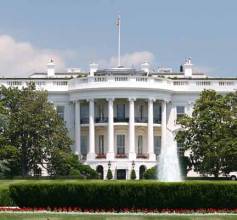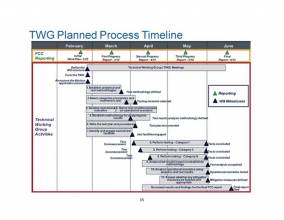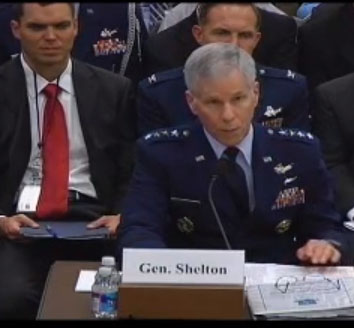[Updated September 2, 2011] Amid White House efforts to keep a lid on the process and congressional hearings on the subject, the controversy surrounding LightSquared’s interference to GPS could compel the Federal Communications Commission (FCC) to require another round of testing — this time of the wireless broadband company’s lower L-band frequencies.
[Updated September 2, 2011] Amid White House efforts to keep a lid on the process and congressional hearings on the subject, the controversy surrounding LightSquared’s interference to GPS could compel the Federal Communications Commission (FCC) to require another round of testing — this time of the wireless broadband company’s lower L-band frequencies.
A meeting last Friday (August 26, 2011) between LightSquared and federal agencies who rely on high-precision GPS receivers appeared to indicate that the FCC and LightSquared may be coming around to the conclusion that an early decision to allow the company to proceed with its terrestrial network of high-powered transmitters is not possible. Other sources, however, suggest that the spectrum agency will push ahead with a decision within a few weeks that allows LightSquared to proceed with its rollout of up to 40,000 high-powered transmitters and deal with any interference effects later.
Extensive tests conducted over several months by a Technical Working Group set up under a January order by FCC focused on single- and dual-channel combinations of 5- and 10-megahertz LightSquared transmissions, mostly in the upper portion of the 1525-1559 MHz band adjoining that of GPS. Those tests found widespread interference to all types of GPS receivers. Late in the test program, the performance of 33 wideband, high-precision receivers was evaluated using transmissions in the lower portion of the band — 31 of those receivers failed in the face of LightSquared interference.
Discussion at last Friday’s meeting, brokered by the National Telecommunications & Information Administration (NTIA), suggested that a new test period — of 90 days or more may be needed. LightSquared advocates could see this as an opportunity to make the case that mitigation approaches would work — particularly filtering for the receivers used in such applications as precision agriculture, surveying, and construction.
The NTIA, which represents the administration in representing spectrum interests to the FCC, has requested an inventory of receivers used by federal agencies as an initial step to mapping out a test plan. Some agencies would also like to see lower precision handheld GPS equipment included in the new test procedures. Earlier, the FCC made a similar request to GPS manufacturers as part of an effort to see how widespread the interference problem may be. The agency appears inclined to accept LightSquared’s argument that the problem is limited to a small percentage of existing receivers, for which mitigation techniques (yet to be developed) can be found.
According to Washington sources familiar with the complex political wrangling, the White House — to which the NTIA reports in matters of spectrum allocation — is trying to keep discussion and decision making about the issue behind closed doors. “Guidance from the White House” on the issue, which includes the mandate that officials “cannot attack LightSquared,” is how one source characterized the administration’s effort.
President Obama apparently sees LightSquared’s plan as a centerpiece of a wireless broadband initiative that he hopes to make part of his re-election campaign. LightSquared’s chief backer, Harbinger Capital hedge fund manager Phillip Falcone, and other top LightSquared officials are past contributors to Obama’s campaign.
The nation’s capital is awash in marketing efforts on behalf of LightSquared, including full-page ads in the daily newspapers, posters plastered in Metro stations, and a radio and Internet campaign. Burson-Marteller, a global public relations and communications firm with offices and affiliate partners in 81 countries, is handling LightSquared’s campaign.
Meanwhile, the NTIA reportedly is refusing to release information about the effect of GPS denial of service submitted by federal agencies in response to a request from the National Coordination Office (NCO) for Space-Based Positioning, Navigation, and Timing (PNT). Acting on a recommendation from the Space-Based PNT Executive Committee, the NCO in May had proposed to the FCC that an additional six-month time period be established for testing the lower 10-megahertz channel that LightSquared
now proposes for its initial broadcasts.
The NTIA is arguing that the agency statements are “predecisional,” which means that NTIA has not decided what it’s position is on the subject and what representation it will make to the FCC on the issue. According to one source, senior officials in some agencies, apparently acting at the direction of the White House, limited staff members to reporting the anticipated effects of LightSquared interference to narrow categories.
Many agency officials had assumed that the reports would be passed along to the FCC, perhaps with an NTIA cover letter, where they would become part of the public record. One of the first agency statements — from the Federal Aviation Administration (FAA) — that was leaked to news media, indicated that LightSquared interference to GPS could cost hundreds of lives and billions of dollars.
Apparently, Rep. Ralph Hall (R-Texas), who chairs the House Committee on Science, Space, and Technology that will hold a hearing on LightSquared impacts to GPS next week, was among those requesting the agency reports, but was rebuffed by the NTIA. Reportedly, some agencies did send copies to Hall directly. Prepared testimony by federal officials for the hearings is being closely vetted in advance by the White House. If questioned by committee members, however, witnesses at the hearing may be able to communicate the key points of their agencies’ LightSquared/GPS interference assessments.
In addition to the science committee’s hearing on September 8, the House Armed Services Subcommittee on Strategic Forces will hold a hearing, postponed from August 3, on sustaining GPS for national security. Witnesses include Russo, Gen. William Shelton, commander of Air Force Space Command; Jules McNeff, vice-president at Overlook Systems Technology, and Scott Pace, director of the Space Policy Institute at George Washington University.
Despite the high-level witnesses and high-profile forum, however, the practical benefit of the hearings could have a limited effect because the committees holding them do not have a direct channel for influencing the independent FCC.
A further complication in LightSquared’s plans may emerge from a recently FCC filing by mobile satellite service (MSS) provider Dish Network to build a nationwide mobile broadband network, only using frequencies far away from GPS and L-band. Taking a page out of LightSquared’s playbook, Dish has filed a transfer application to license 40 megahertz of S-band (around the 2 GHz frequencies) spectrum owned by TerreStar.
In the words of mobile satellite industry analyst Tim Farrar, “DISH is now in a perfect position to replace LightSquared as the FCC’s favored option for providing additional wireless competition. Indeed DISH highlights specifically in the TerreStar application that ‘use of the [2GHz] band also does not give rise to the GPS interference issues that have hampered the use of the L-band’ which is one of the factors meaning that the ‘promise of MSS/ATC has yet to be fully realized.’”






